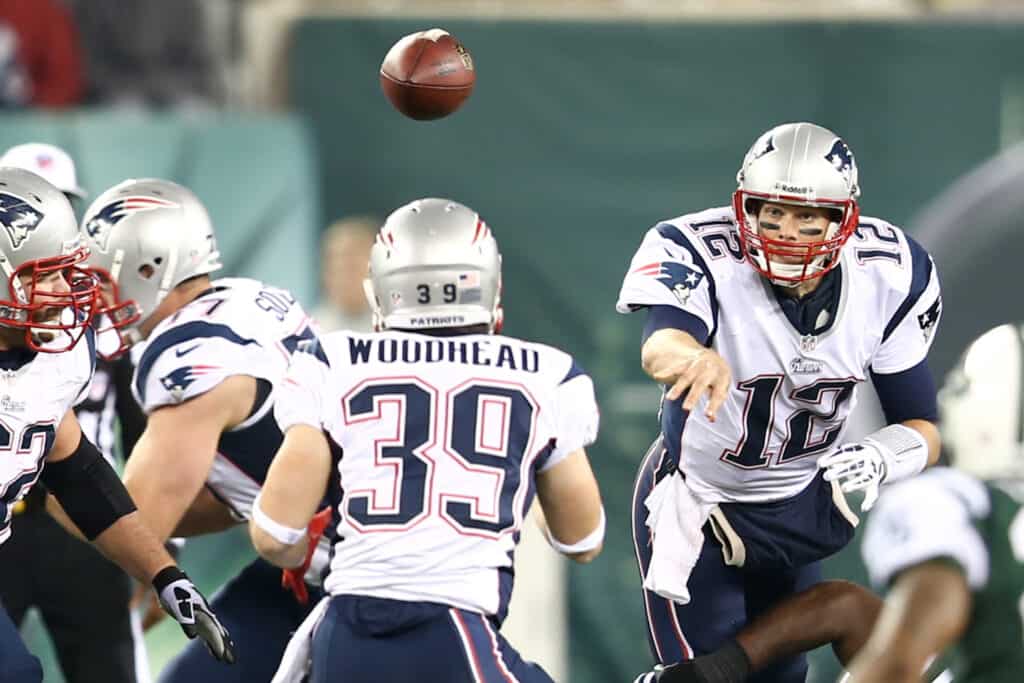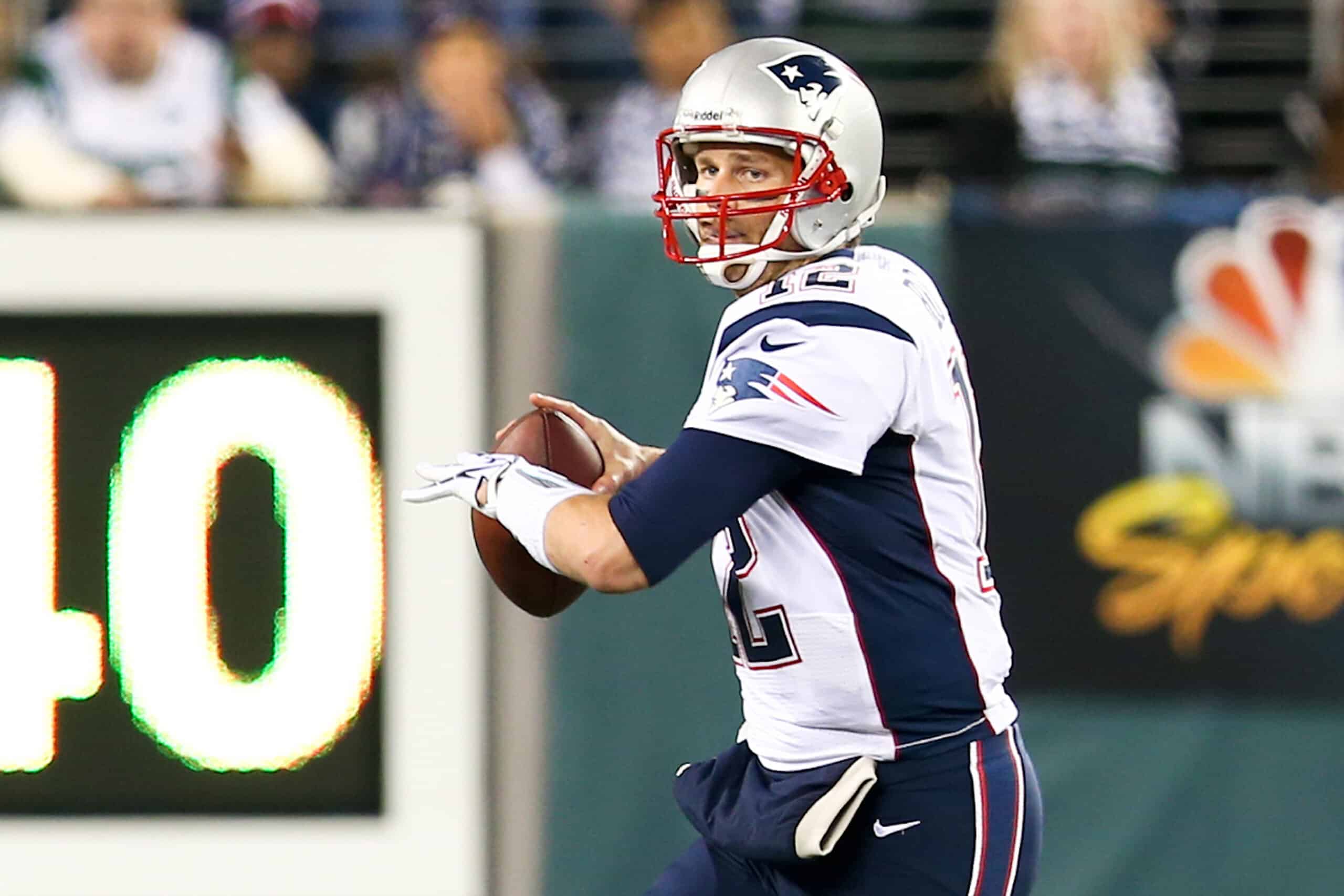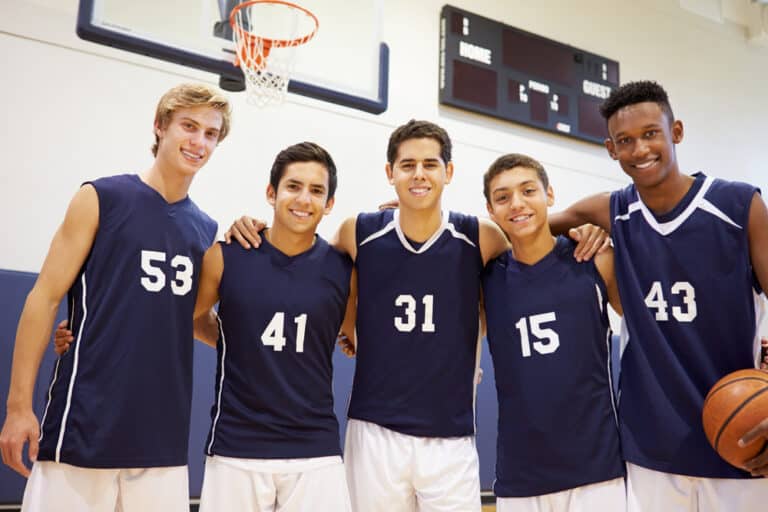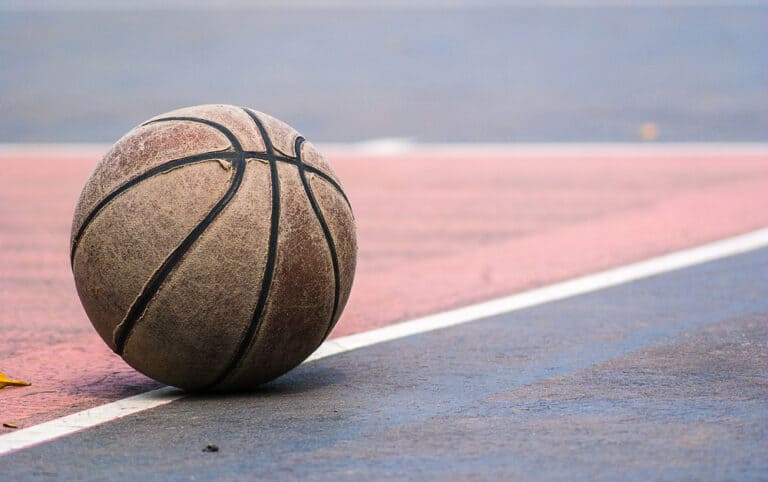Can A Quarterback Throw To Anyone? (All You Need To Know)
Editorial credit: Debby Wong / Shutterstock.com
Football can be confusing, especially around who the quarterback can throw to. While some people may believe that the quarterback can throw to anyone, this will depend on the position of the player he is throwing to and whether they are ahead of or behind the current line of scrimmage at the time of the pass.
The quarterback can pass laterally to anyone but can only throw the ball forward to eligible receivers. While he could theoretically pass to himself and hand off to linebackers behind the line of scrimmage, the football rules only allow forward passes to designated receivers downfield.
To better understand whether the quarterback can throw to anyone, we need to look at which players are eligible to receive the ball downfield and which are not and why he can throw to any players behind the line of scrimmage.
Forward Vs. Lateral Passes
Before we look at who the quarterback can throw to, we must distinguish between a pass thrown forward and a lateral or backward pass. The rules in football differentiate between these two passes , so we must also.
A forward pass is any ball thrown toward the opponent’s goal line, while a lateral pass travels laterally or toward the offensive team’s end zone. There is only one forward pass allowed per play in football, but there is no official limit on the number of lateral passes that can be made.
With lateral passes, any player on the offensive team can receive a lateral, and the ball can be passed from player to player, but passes thrown forward can only be made to eligible receivers.
Who Are The Eligible Receivers In Football
Eligible receivers on offense and defense are different, as all players on defense are eligible. Still, only a limited number of players on offense are legally allowed to catch the ball ahead of the line of scrimmage.
These players are eligible by their position before the snap and by their jersey number. Eligible receivers are typically fullbacks, tight ends, wide receivers, and running backs, while offensive linemen are not eligible receivers.
Remember that an eligible receiver can catch a ball thrown forward from the line of scrimmage, so let’s look at these positions and numbers so you can identify them in a game.
What Numbers Can A Quarterback Throw To
Every player on the football field wears a number on their jersey, and while most people may think this is a random number, this is not the case. The number determines the pass eligibility of the player and whether the quarterback can throw to them.
In football, eligible receivers include the quarterback, placekicker, and punter, as well as wide receivers, running backs, and tight ends. These players will have their jerseys numbered between the number 1 and 49 and also between 80 and 89, which is why you typically see this range of numbers on the offensive line.
Any player that has a number between 50 and 79 is not an eligible receiver, as they will be offensive linemen. All defensive players, regardless of number, are eligible to receive the ball.
What Positions Can A Quarterback Throw To
However, the number alone does not solely determine the eligibility of an offensive player; it’s also the position they line up in on the line of scrimmage.
The offensive line consists of five offensive linemen and six eligible receivers. The receivers can only line up on each end of the scrimmage line like tight ends or wide receivers, or at least a yard behind it like running backs.
Any that does not take an eligible position on the offensive line may not receive a ball thrown forwards as they will incur an ‘ineligible receiver’ penalty on the play, which would result in a yardage penalty or even a loss of a down on the play.
Again, there are exceptions to this rule, too, as offensive linemen may become eligible if they announce themselves as such and take up an eligible position on the line, even if their number does not fall into the ‘eligible’ receiver category.
One of the best examples was in 1985 when Chicago Bears legendary lineman William’ Refrigerator’ Perry caught a touchdown pass after declaring himself eligible before the play.

What Happens When An Ineligible Receiver Becomes Eligible
Suppose the offense wishes to have one of their normally ineligible players become an eligible receiever on a play. In that case, that player must declare himself eligible to the referee, who must announce it to the defense so they know the player is now legally entitled to receive a ball downfield.
That player must also then assume a position on the line of scrimmage that is either wide of the line of scrimmage or at least one yard behind the line and remain stationary for the snap of the ball.
This tactic can be used as a fake to confuse the defense or as a tactical ploy, as was the case with the ‘Fridge’ in 1985. Provided players that would normally be classified as ineligible abide by the rules and declare eligibility before the snap; the quarterback can throw to them downfield.
Aside from the jersey number and position on the line of scrimmage, a player is also considered ineligible if they are not at least a yard behind the line of scrimmage at the snap.
Even if they were classified as eligible based on their number, the quarterback would not be able to throw to them if they are not positioned at least one yard or more behind the line at the snap.
Conclusion
Knowing who the quarterback can throw to, which receivers are eligible and why, and the differences between a forward pass and a lateral one will make understanding football’s offensive systems and strategies easier and lead to more game enjoyment.
The subtleties of the eligibility of players are an important component of the offensive strategy for both players and viewers. Understanding how traditionally ineligible receivers can become eligible means you know exactly who the quarterback can throw to and why he can’t just throw to anyone.







